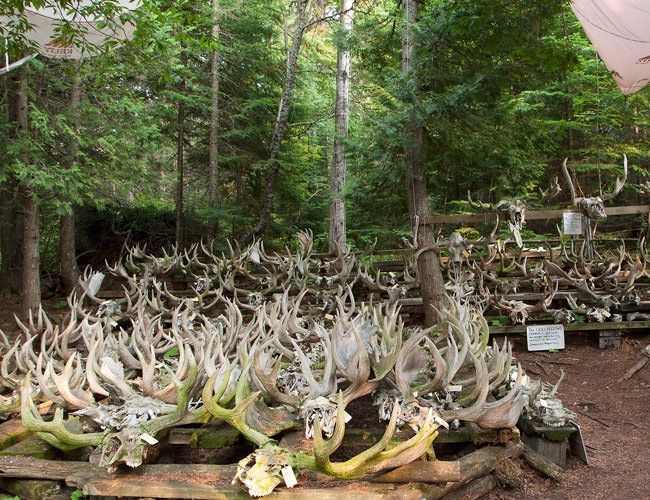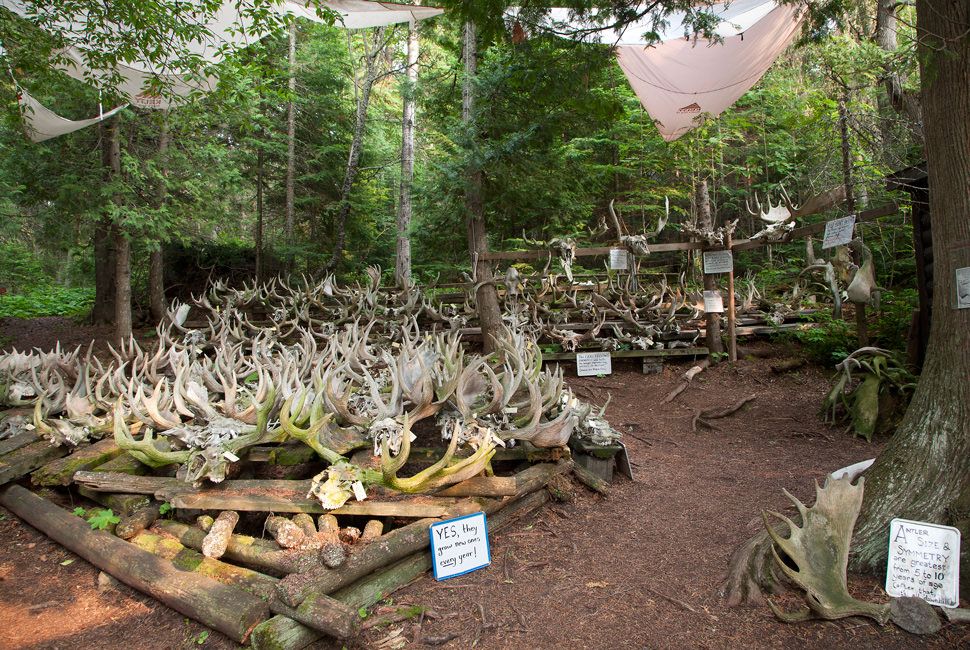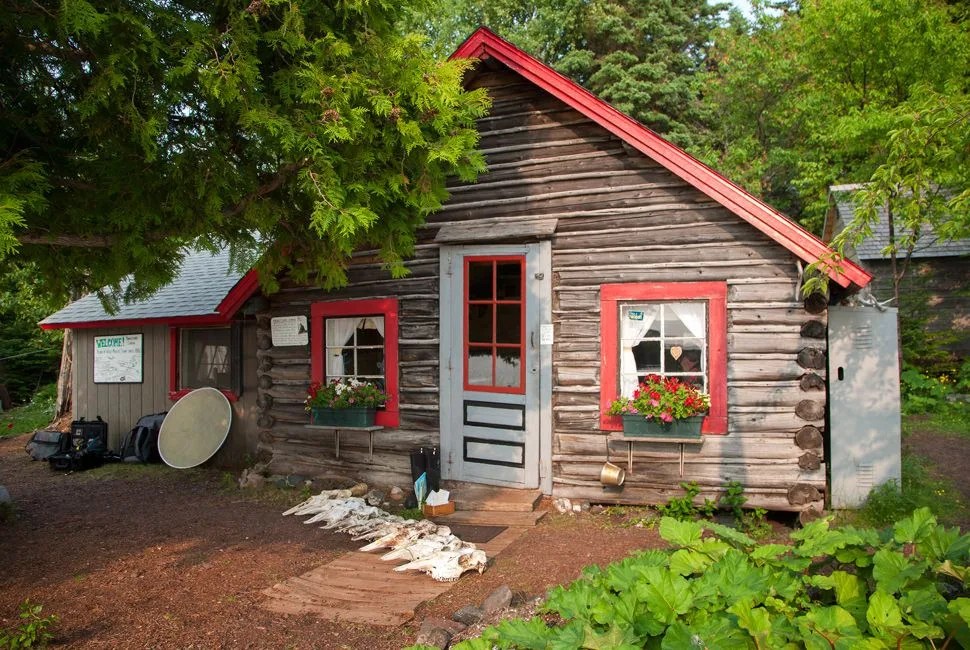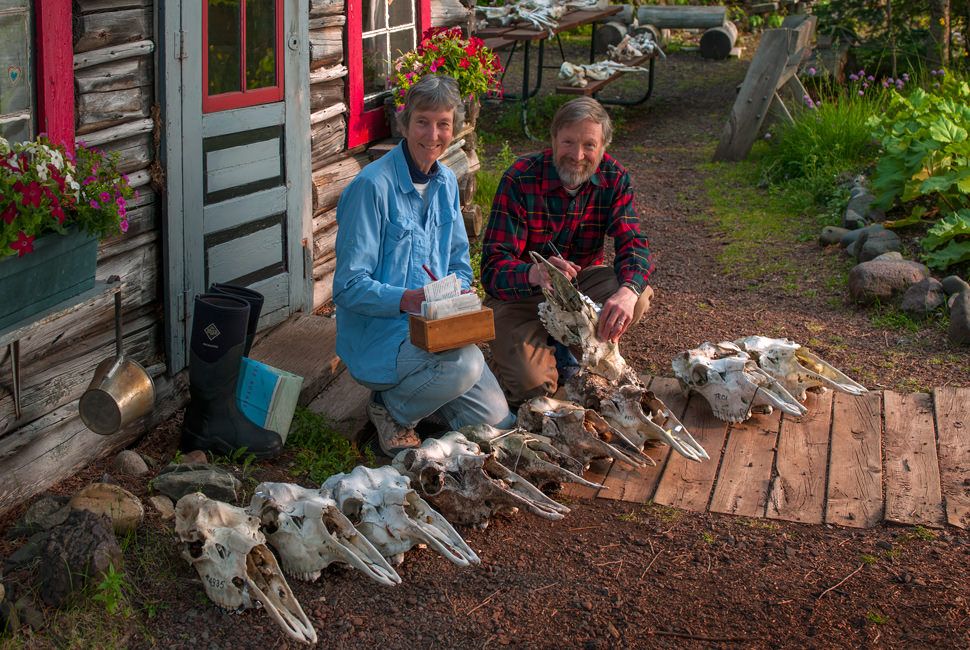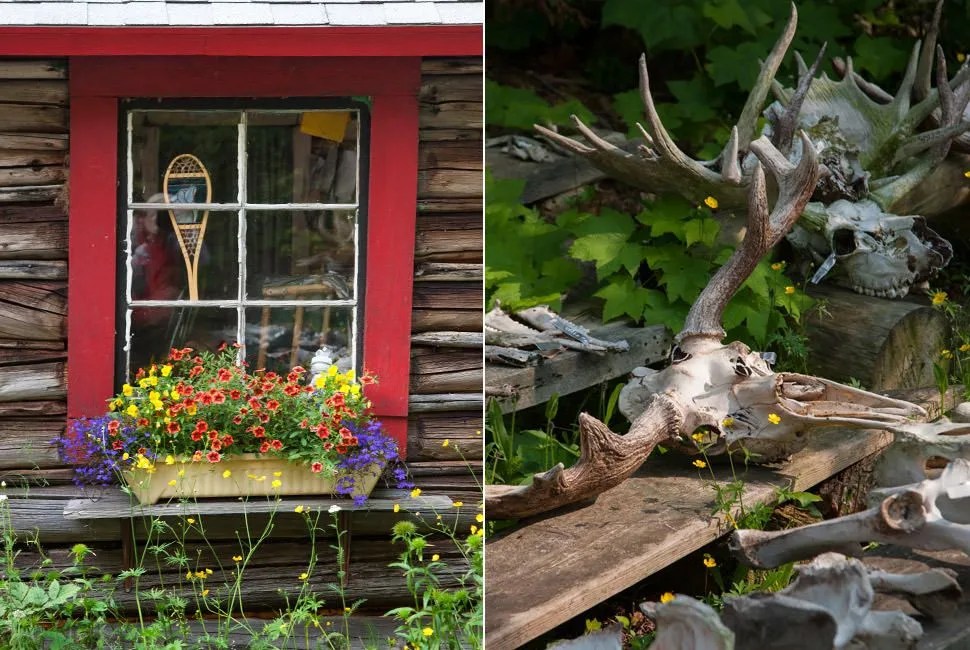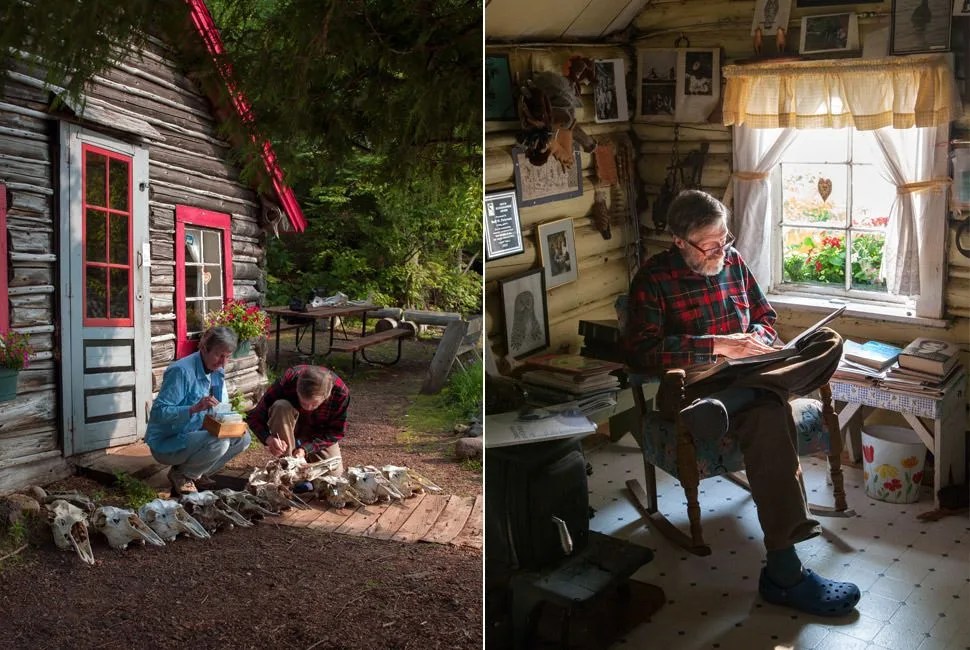6 photos
From the water, Bangsund Cabin looks like what it is: a bright refuge in the wilderness, where kindly strangers take in wayward children and feed them cinnamon rolls hot off the hearth. From the woods, however, you might think you’ve stumbled into The Blair Witch Project, and that you’re about to be eaten by a hungry woman with hair all over her body whose hoofs never touch the ground.
Begun in the winter of 1959, the Isle Royale Wolf & Moose Project is the longest-running large animal study in the world — longer than Jane Goodall’s study on chimps or Dian Fossey’s gig with gorillas. Its most tenured custodians and devotees, Rolf and Candy Peterson, keep the world’s largest collection of moose bones behind their tiny summertime outpost at Bangsund Cabin on Isle Royale’s eastern shore. Piled up on sepulchral risers are hundreds of mossy skulls, a veritable amphitheater of moose mortality. There’s much to learn about the island’s moose and wolf population from decoding these bones, and the Petersons and a cadre of volunteers spend huge tracts of time pickled in bug dope, bushwhacking for the dead. It’s unsentimental work in an unforgiving habitat.

The world’s largest freshwater island (and the country’s least-visited National Park) floats in the great sea of Lake Superior, shrouded in fog and biologically cut off from the rest of North America. Isle Royale is a bit like the Petersons’ compound: both savage and inviting. Everything is edgy here. The air has an edge to it, courtesy of a perpetual chill off of Lake Superior. The rocks have sharp edges. The light is sharp. Civilization clings to a narrow strip of the shoreline, its comforts magnified by their proximity to Stone Age nothingness.
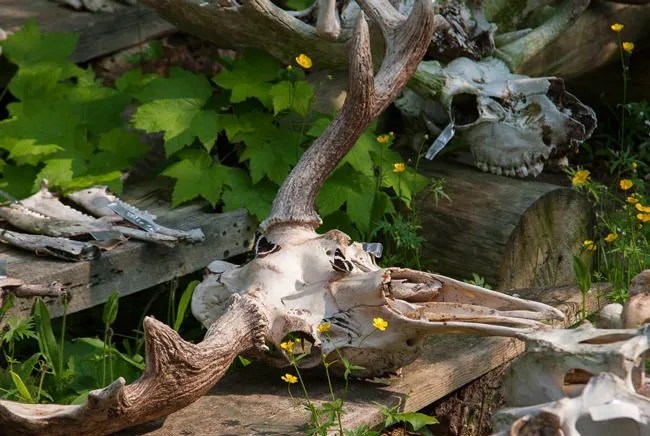
Accounts vary on how Isle Royale became an outpost for moose (and a giant offshore icebox stocked with lip-smacking deliciousness for its wolf population). The moose either swam out, crossed from the mainland on an ice bridge, or were stocked on the island by hunters in the 1920s. Anecdotal evidence points to the late 1940s, during an especially cold Minnesota winter, when a pair of wolves dared to cross miles of trackless ice and set the stage for a predator-prey feedback loop — one that, because of the hermetically sealed ecosphere of the island, is unlike anything else on the planet.
